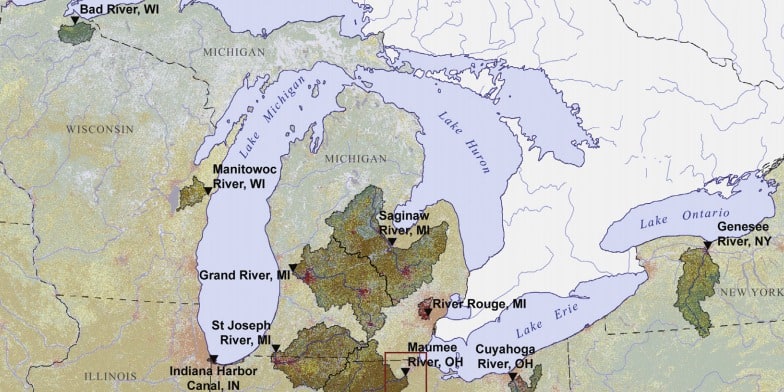

U.S. scientists found neonicotinoid insecticides in about three-quarters of samples from 10 major Great Lakes tributaries. The study is the first to examine the insecticides—gaining notoriety in recent years as a prime suspect in bee die-offs— in the world’s largest freshwater system and suggests Great Lakes’ fish, birds and entire ecosystems might be at risk.
"This study is one of many that shows we know very little about the repercussive effects of pesticides once released into the environment," said Ruth Kerzee, executive director of the Midwest Pesticide Action Center, who was not involved in the study.
"We are told these compounds break down rapidly when exposed to sunlight and, yet, this study shows persistence in the environment long after applications." The study comes as draft legislation is circulating in Congress that would remove requirements that the U.S. Environmental Protection Agency consult with the U.S. Fish and Wildlife Department and the National Marine Service over pesticides’ impact on threatened and endangered species.
Neonicotinoids are the most heavily used insecticides on the planet—designed to attack the nervous systems of insects and protect crops from damage. Once thought to […]
Full article: Controversial insecticides pervasive in Great Lakes tributaries
Mayors, Anishinabek Nation Call for Stricter Rules in Great Lakes Withdrawals
Ojibwe Grandmother has walked 17,000 km to raise consciousness about water
Blue Water Bridge a potential crossing for U.S.-bound liquid nuclear waste
The great siphoning: Drought-stricken areas eye the Great Lakes
Antidepressants found in fish brains in Great Lakes region
Clean water is essential for life, yet millions of Americans unknowingly consume contaminants through their…
Human brains contain higher concentrations of microplastics than other organs, according to a new study, and the…
From the Office of the Governor: In anticipation of a multi-day, significant atmospheric river in Northern California,…
From Governor Newsom: Scientists, water managers, state leaders, and experts throughout the state are calling…
Photo: A harmful algal bloom in Milford Lake, Kansas, made the water appear bright green.…
An expanded plastic foam coffee cup is at a donut shop in Monterey Park, California.…